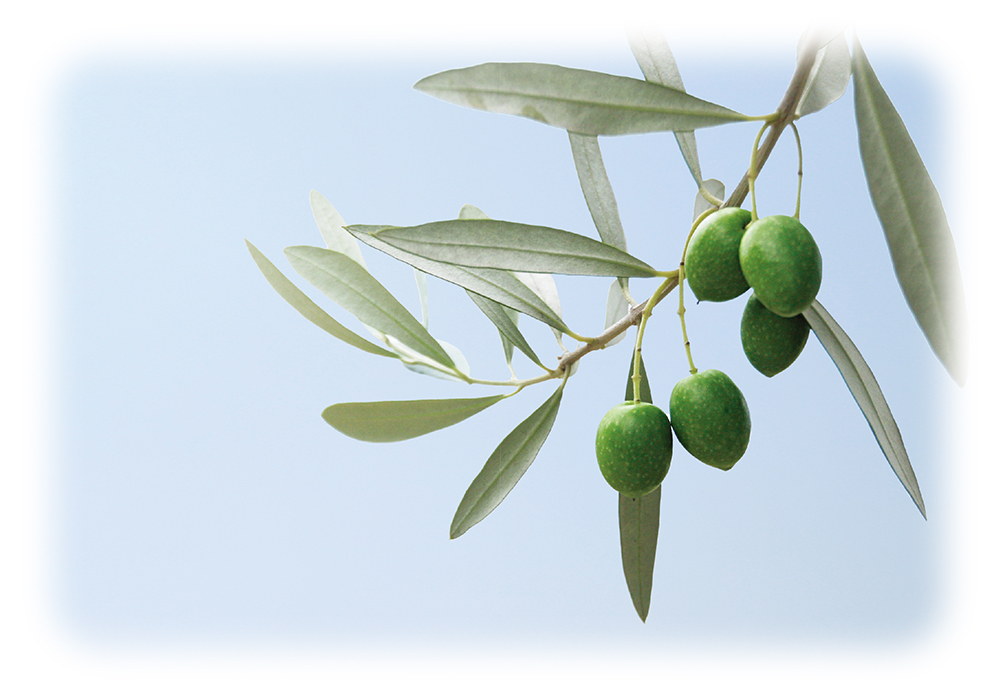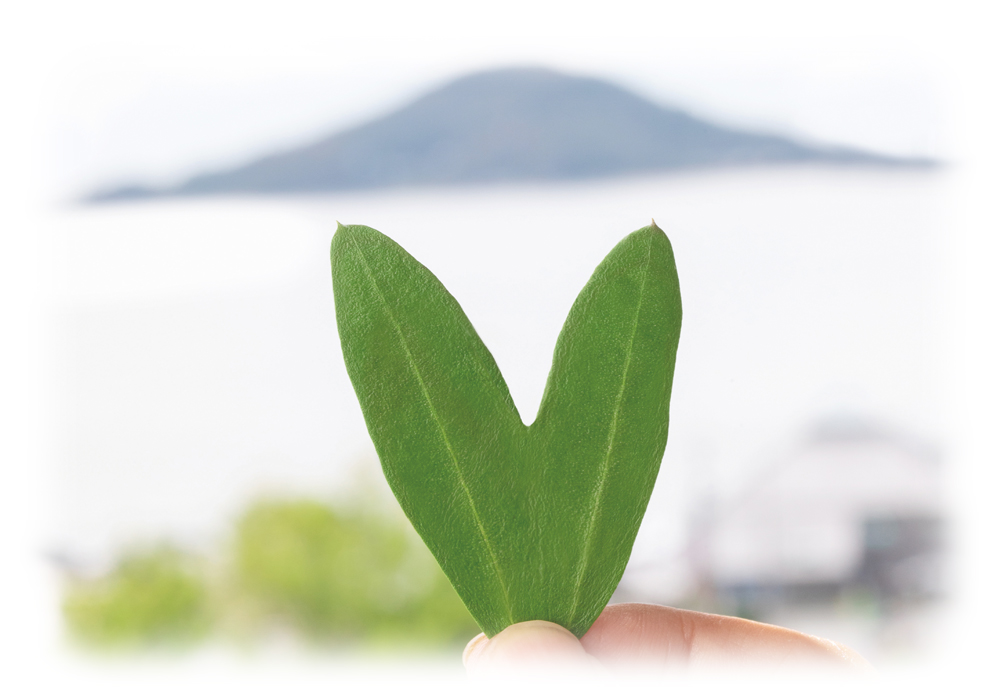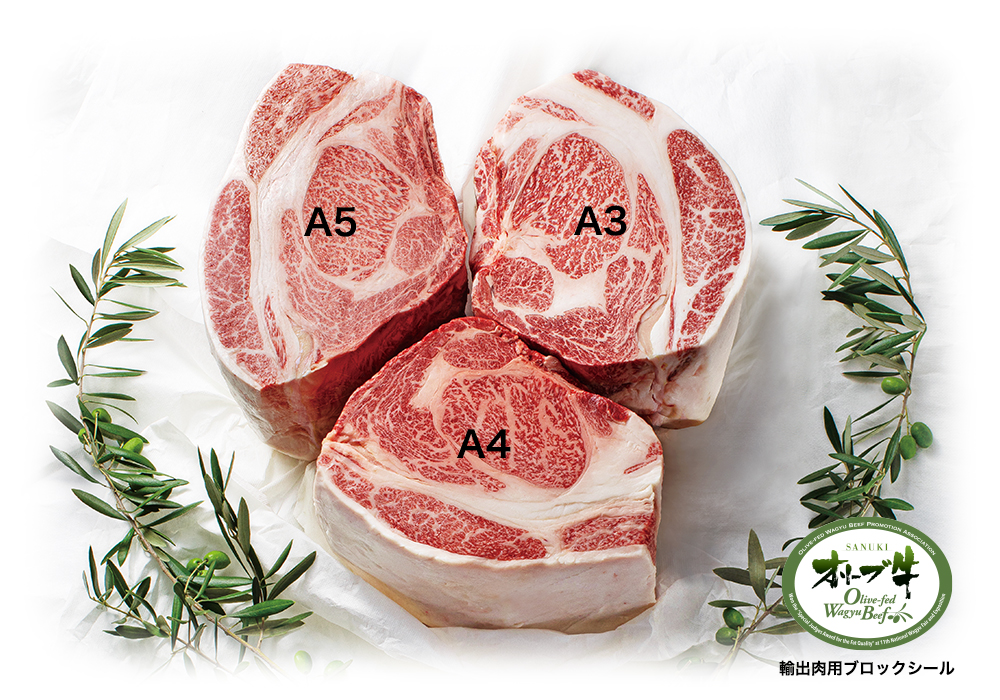



日本のオリーブ栽培発祥の地であり、100年を超えた歴史を誇る、香川県・小豆島のオリーブ。
瀬戸内の温暖な気候風土のなかで、古くから育まれてきた讃岐牛。
2つの歴史が融合し、香川県だからこそ成し得たプレミアム黒毛和牛。
県木・オリーブ搾り果実を与え育て上げた讃岐牛、それが「オリーブ牛」です。
Olive-fed Wagyu Beef (OFW) was first introduced to the Japanese market
in 2011 and quickly earned a well-deserved reputation for excellence.
Most notably OFW took home a special prize for fat quality at the 2017 Wagyu Olympics.
OFW was featured on Eater’s The Meat Show with meat expert ※Nick Solares.
Solares noted that, “While finishing cattle with olive lees is unique to Kagawa,
the success of the process means that you shouldn’t be surprised to see it widely adopted in the future.”

日本でのオリーブ経済栽培は、明治41年(1908年)に全国3県に
輸入したオリーブ苗木を植えたのがはじまりで、
結果、香川県(小豆島)に植えられたものだけが根付きました。
以来、小豆島は「日本オリーブ栽培発祥の地」として知られています。
In 1908, Japan conducted its first olive test cultivations. Imported olive saplings were planted at three locations.
Shodoshima island in Kagawa was the only location at which the saplings took root. From that point on,
Shodoshima was known as the birthplace of olive cultivation in Japan.

小豆島の特産であり、
香川県の県木でもあるオリーブ。
小豆島の肥育農家が、オリーブオイル搾油後の果実を飼料化することに成功。
瀬戸内海の温暖な気候風土と、オリーブに育まれた「讃岐牛」。
香川県だからこそなし得たプレミアム黒毛和牛、それがオリーブ牛です。
"Olive-fed Wagyu Beef" is produced exclusively on Shodoshima island, in Kagawa Prefecture.
The olive tree is a symbol of Kagawa. On Shodoshima, farmers who are specialists in fattening have created cattle feed from
the parts of olives that are usually discarded after pressing.
"Sanuki wagyu" is a product of olives and the mild climate of the Seto Inland Sea.
"Olive-fed Wagyu Beef" is a premium Sanuki Olive Beef, made only in Kagawa.

香川の牛の歴史は古く、西暦700年に遡ります。
明治15年、小豆島で全国に先駆け、和牛の肥育がはじまります。
大正のはじめには、京阪神で高い評価を受けた品質の高い「讃岐牛」を、
さらにオリーブの力でクオリティを向上させました。
たゆまない努力、恵まれた気候風土のなかで培われた肥育技術。
品質の高い「讃岐牛」を生み出す知恵と技は生産の礎となっています。
Cattle farming has a long history in Kagawa, stretching back to the year 700.
In 1882, Shodoshima became the first place in Japan to start fattening beef. In the early 1900s,
Kagawa-produced beef was highly regarded by people in Kyoto, Osaka and Kobe, who affectionately called it
"Sanuki Wagyu". Unwavering efforts and a favourable climate have contributed to the development of fattening technology.
The production of high-quality "Sanuki Wagyu" is grounded in knowledge and skill.